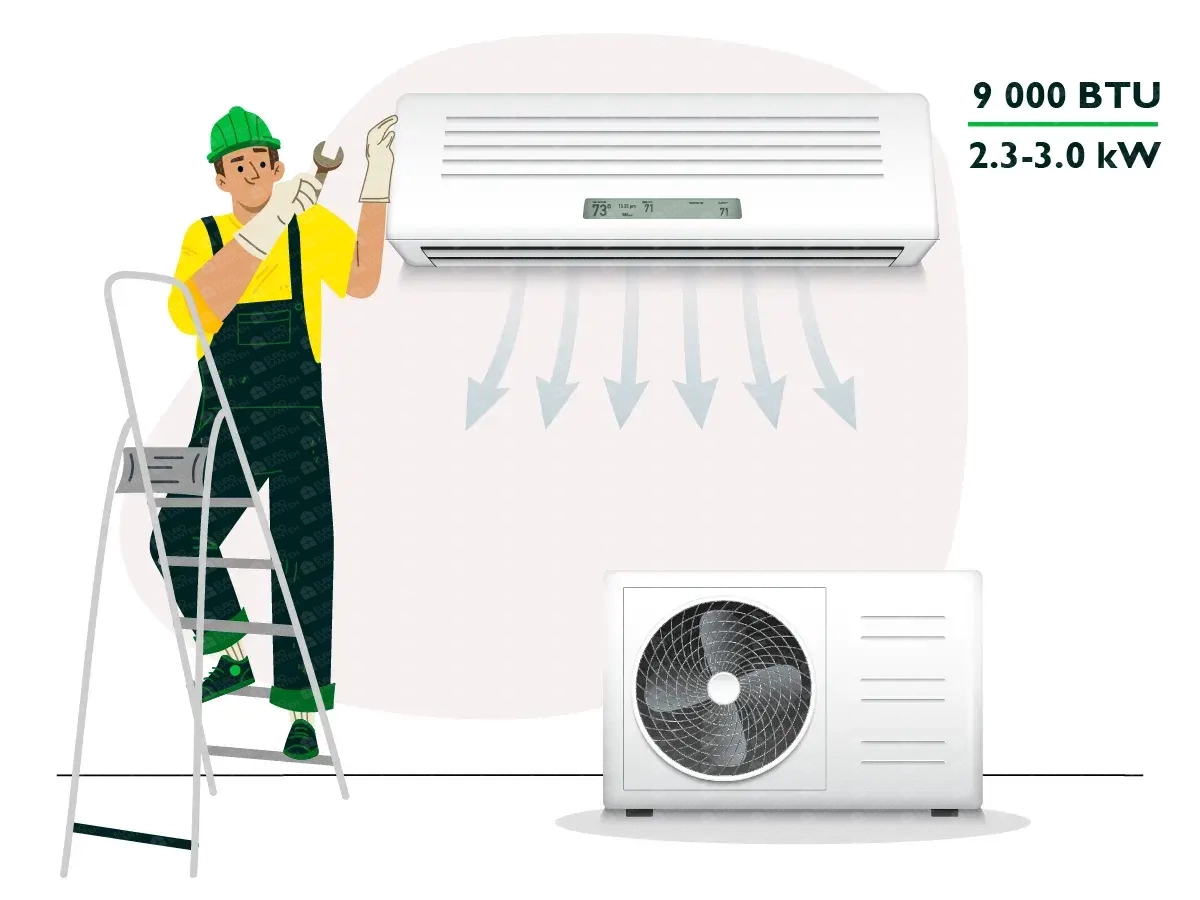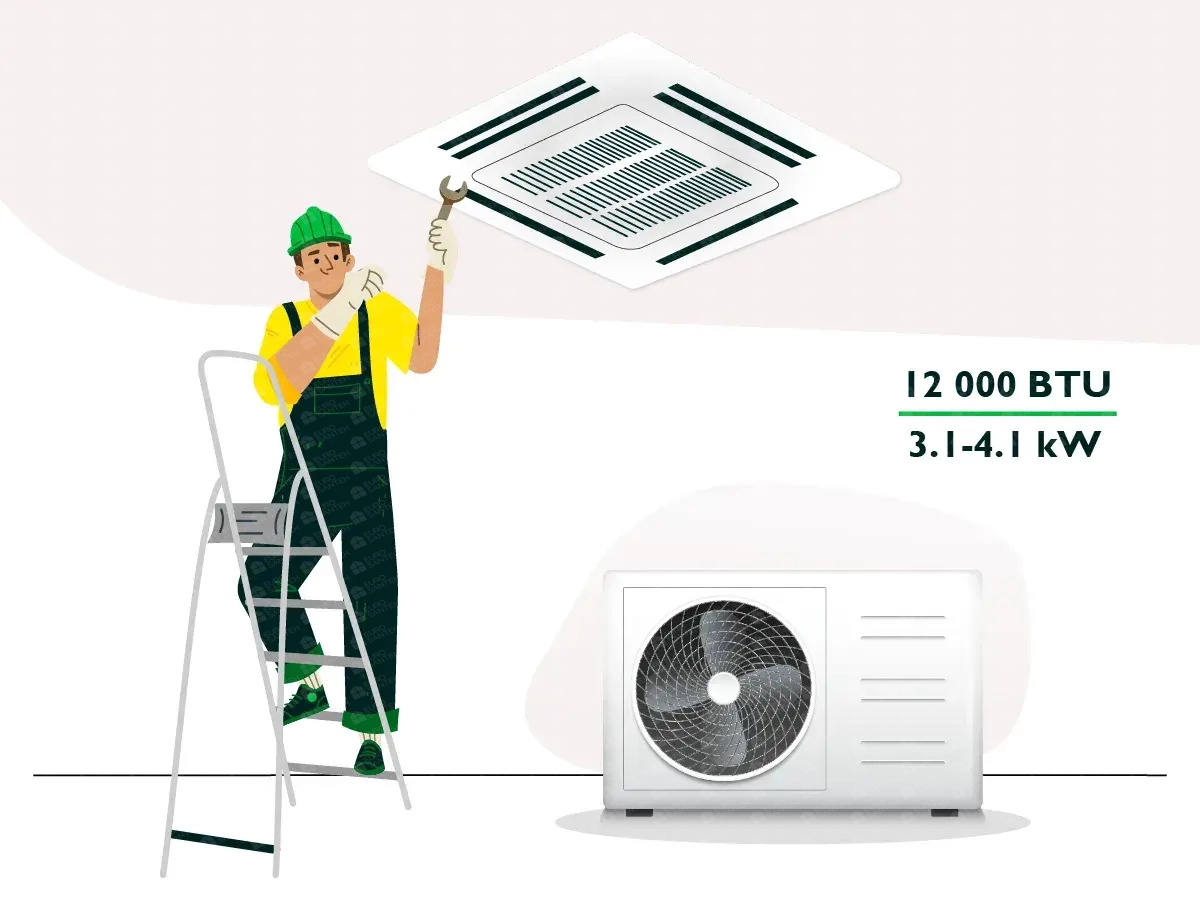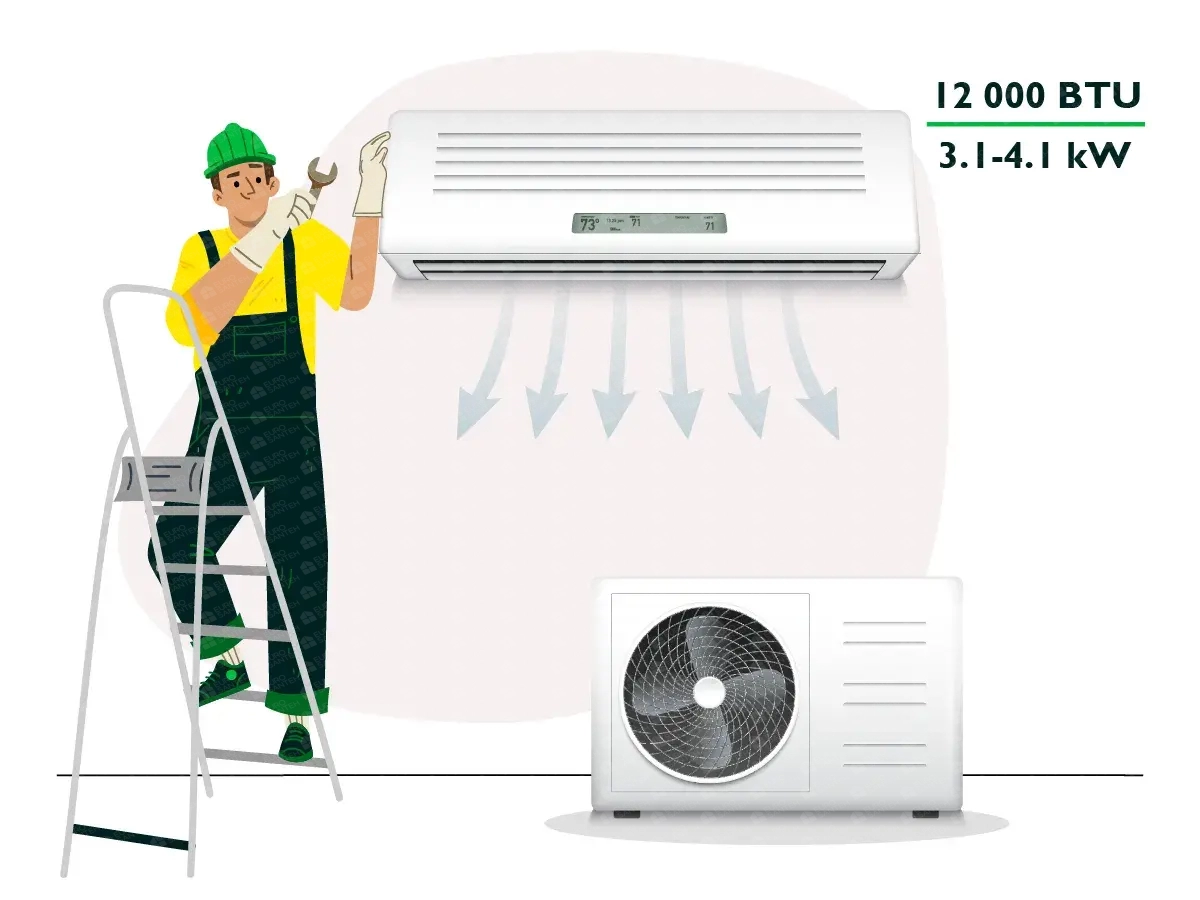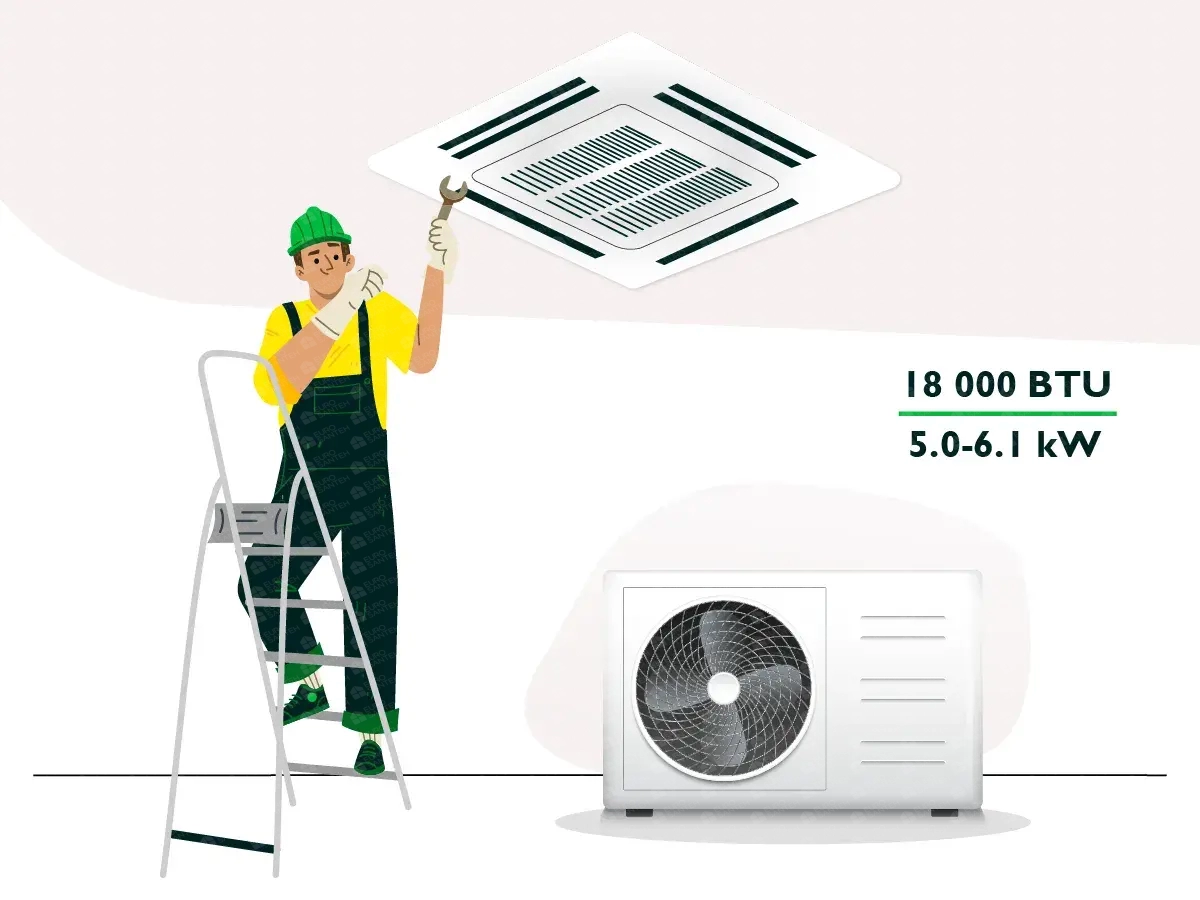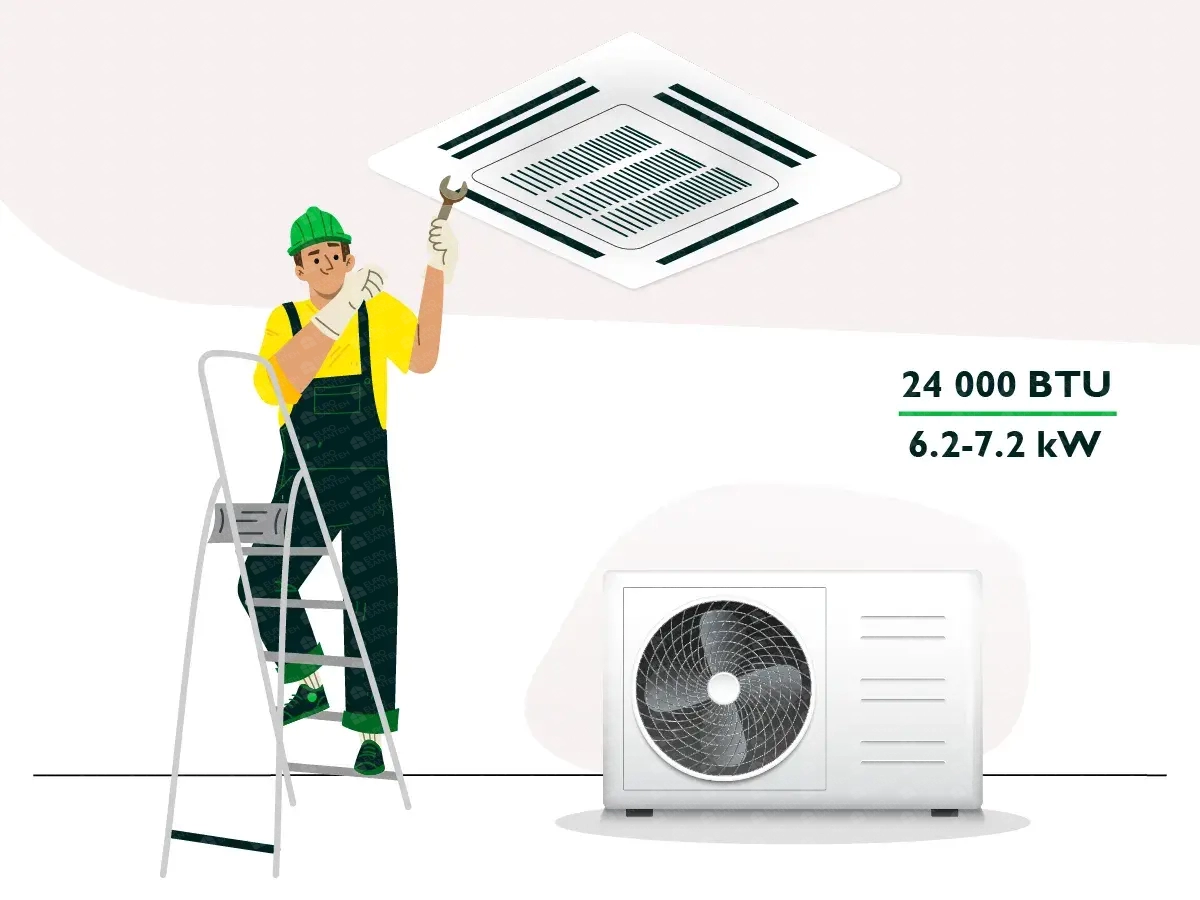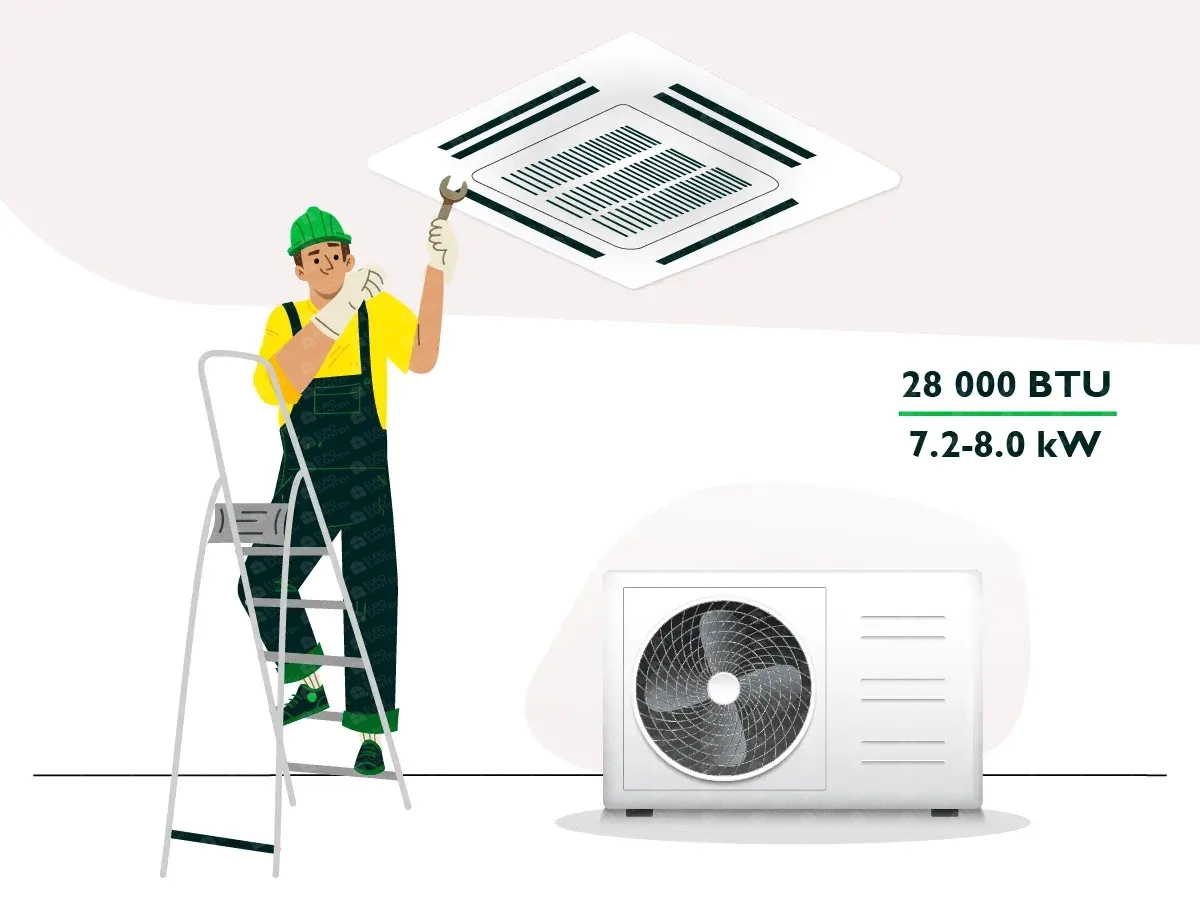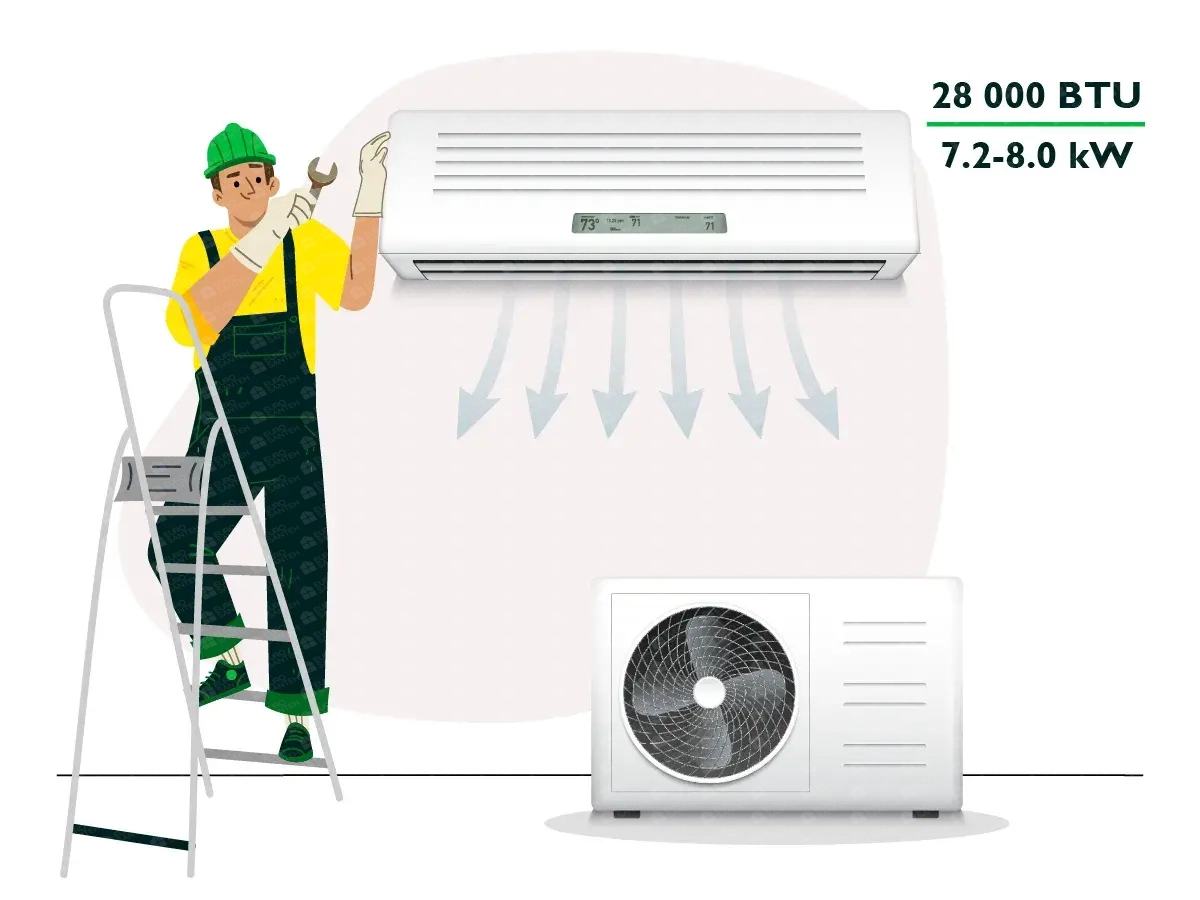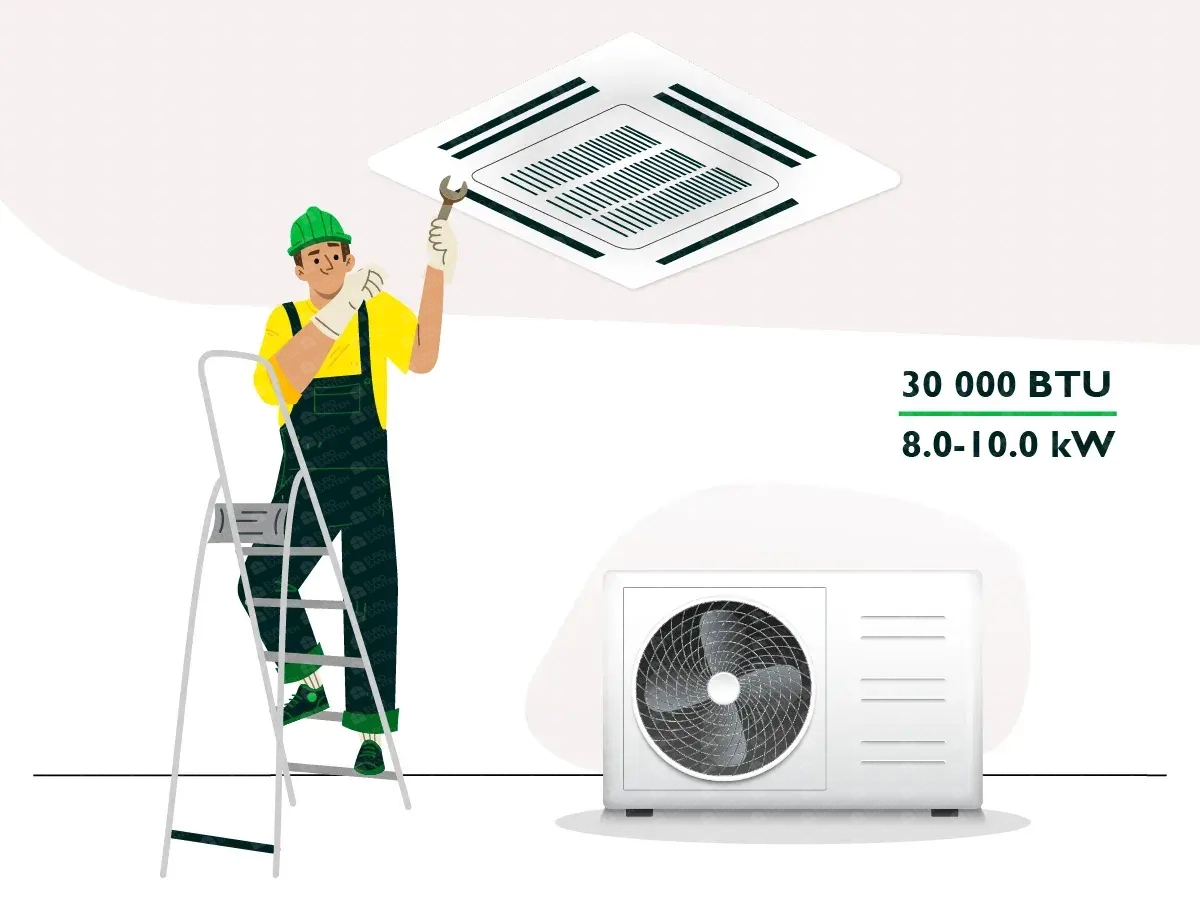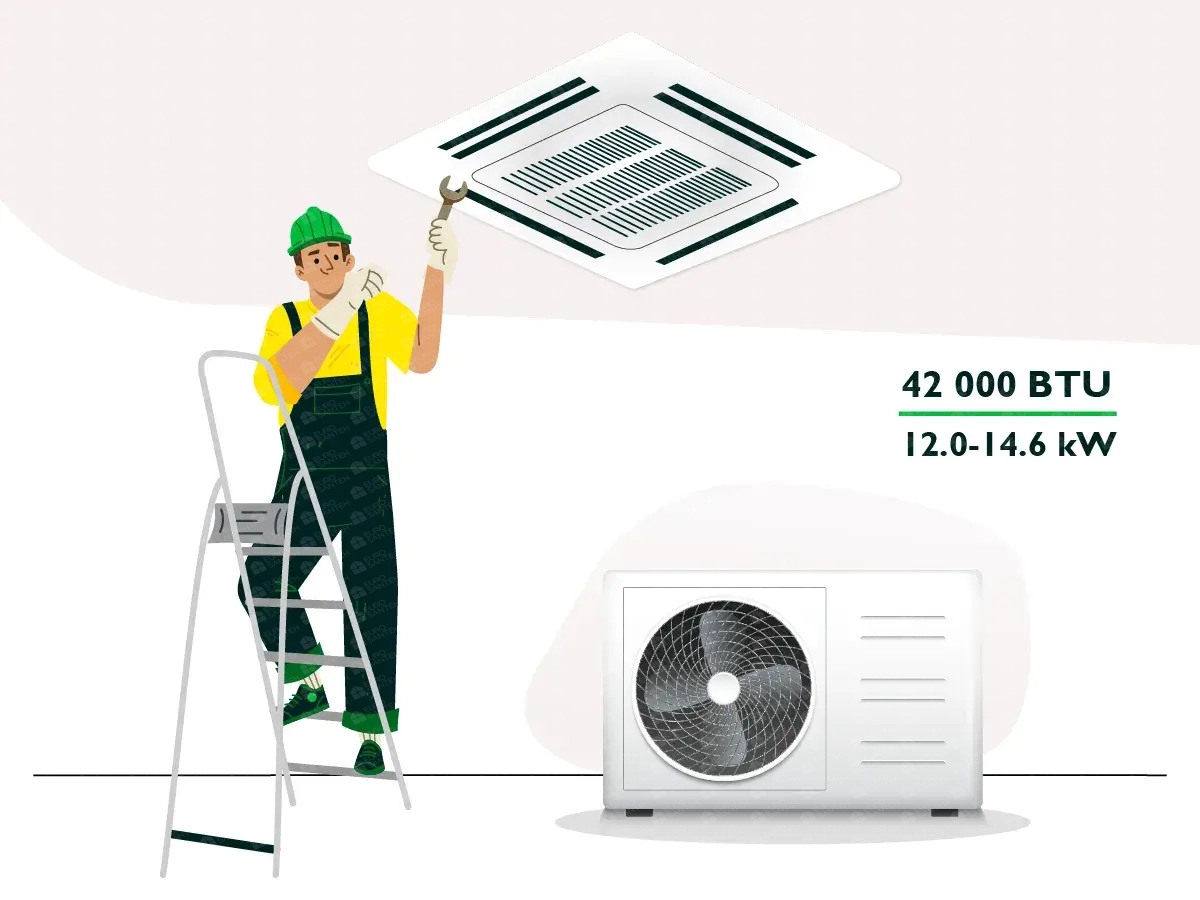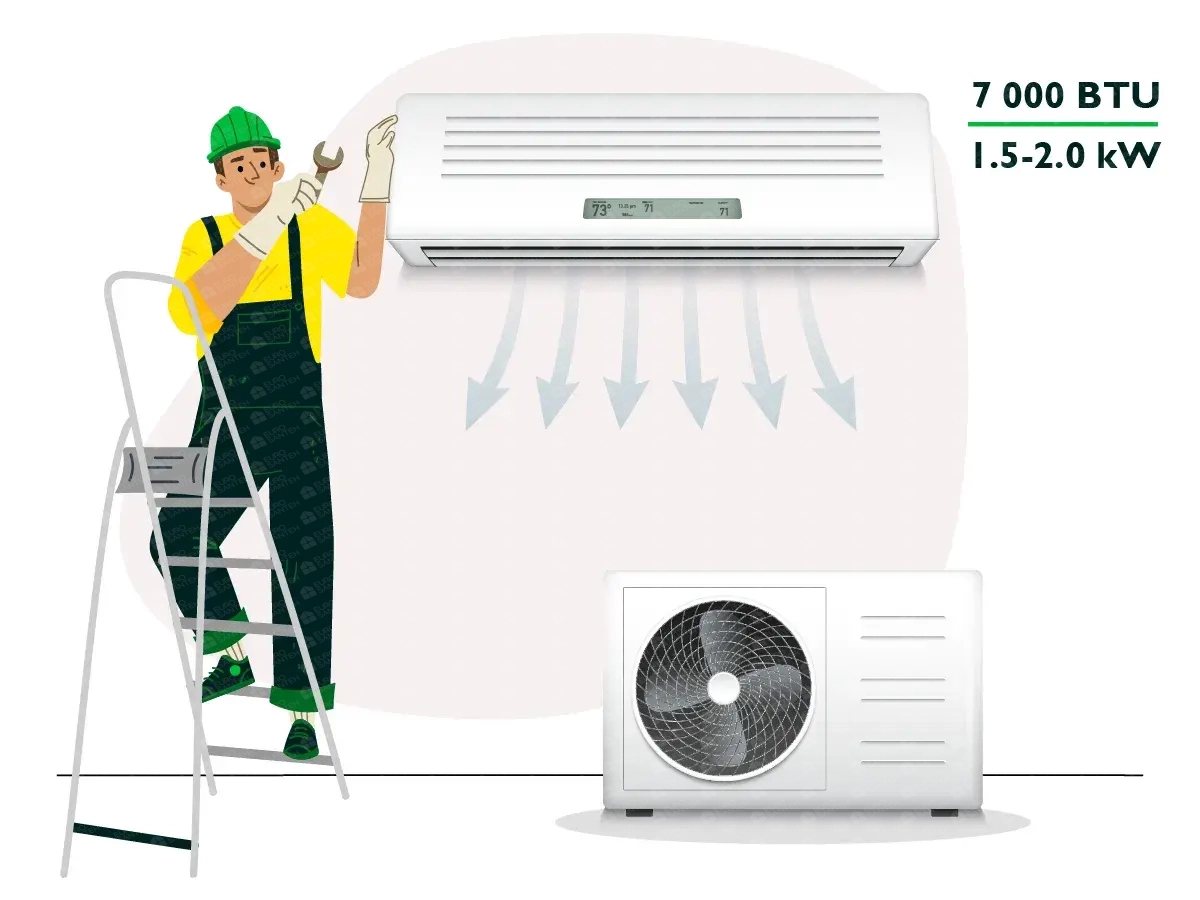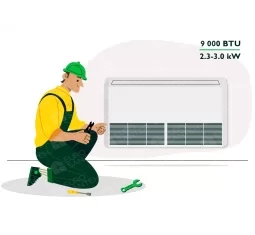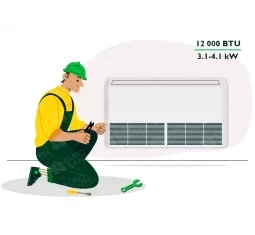Gree air conditioner installation in Chisinau, Moldova
Installing a Gree air conditioner can significantly enhance the comfort of your home or office, providing efficient cooling and heating solutions. Gree is renowned for its reliable, energy-efficient, and technologically advanced air conditioners. This guide will walk you through the essential steps of installing a Gree air conditioner, along with valuable tips for selecting the right model and ensuring optimal performance.
Choosing the Right Gree Air Conditioner Model
Before diving into the installation process, it is crucial to choose a model that suits your needs. Gree offers a wide range of air conditioners, from compact window units to powerful split systems. Here are some factors to consider:
Room Size: The size of the area you want to cool or heat is a primary factor. Larger spaces require more powerful units. Gree provides models with varying capacities, so ensure you select one that matches your room size.
Energy Efficiency: Gree air conditioners are known for their energy efficiency. Look for models with high SEER (Seasonal Energy Efficiency Ratio) ratings. Models with an A+++ rating will save you money on energy bills in the long run.
Features: Modern Gree air conditioners come with a host of features such as smart connectivity, built-in air purifiers, humidity control, and different cooling modes. Decide which features are essential for your comfort.
Noise Levels: If the unit will be installed in a bedroom or office, noise level is an important consideration. Gree models are designed to operate quietly, but it’s still worth checking the decibel (dB) ratings.
Preparing for Installation
Once you’ve selected the right model, the next step is to prepare for the installation. Proper preparation ensures a smooth process and optimal functioning of your air conditioner.
Tools and Materials Needed
To install a Gree air conditioner, gather the following tools and materials:
- Drill and concrete drill bits
- Screwdriver
- Level
- Measuring tape
- Mounting brackets and screws
- Insulation materials
- Refrigerant pipes and electrical cables
- Drain hose
Installation Steps
1. Determining the Installation Location
The placement of both the indoor and outdoor units is critical for the efficient operation of your Gree air conditioner. For the indoor unit, choose a wall that is free from obstructions like furniture or shelves and is at least 2 meters above the floor. This placement ensures better air distribution. Also, avoid locations where direct sunlight or heat sources can affect the unit’s efficiency.
For the outdoor unit, select a location that allows proper ventilation. It should be placed away from direct sunlight and protected from rain. A balcony, roof, or a sturdy wall bracket are ideal locations. Ensure there is enough clearance around the unit for maintenance and airflow.
2. Installing the Mounting Brackets
Begin by installing the mounting brackets for the indoor unit. Use a level and measuring tape to mark the drill points on the wall. Drill holes and insert the wall plugs or anchors. Secure the brackets firmly using screws. Ensure the brackets are level to avoid issues with drainage and operation.
3. Connecting the Refrigerant Pipes and Electrical Cables
With the brackets in place, the next step is to connect the refrigerant pipes and electrical cables. These connections must be made carefully to prevent leaks and electrical hazards. Follow these steps:
Refrigerant Pipes: Measure and cut the refrigerant pipes to the required length. Connect the pipes to the indoor unit, ensuring all connections are tight and leak-free. Use insulation materials to cover the pipes and prevent energy loss.
Electrical Cables: Connect the electrical cables as per the wiring diagram provided in the installation manual. Use cable ties to secure the wires and prevent them from becoming tangled or damaged.
Drain Hose: Attach the drain hose to the indoor unit and ensure it has a downward slope to allow for proper drainage of condensation.
4. Mounting the Indoor Unit
Once the connections are complete, mount the indoor unit onto the brackets. Double-check that the unit is securely attached and is level. Any tilt can affect the drainage system and lead to water leakage inside the room.
5. Installing the Outdoor Unit
The outdoor unit should be installed on a solid surface using appropriate brackets or a platform. Make sure the unit is level and secure to prevent vibrations and noise. Connect the refrigerant pipes, electrical cables, and drain hose to the outdoor unit. Again, ensure all connections are tight and properly insulated.
6. Vacuuming and Charging the System
After all connections are made, it’s essential to evacuate air and moisture from the refrigerant circuit. This step typically requires a vacuum pump. Attach the pump to the service valve on the outdoor unit and evacuate the system. Once the vacuuming is complete, you can charge the system with refrigerant. This process is critical and should be performed by a qualified technician to ensure proper refrigerant levels and prevent damage to the unit.
7. Testing the System
Finally, turn on the air conditioner and test its operation in different modes. Check for any unusual noises, vibrations, or leaks. Ensure the system is cooling or heating effectively and that the remote control or smart connectivity features are working correctly.
Maintenance Tips
Regular Cleaning: Clean the filters and the indoor unit’s coils regularly to maintain efficiency. Dust and debris can hinder airflow and reduce performance.
Scheduled Servicing: Have your Gree air conditioner serviced by professionals at least once a year. This will include checking the refrigerant levels, inspecting electrical connections, and cleaning the outdoor unit.
Energy-Saving Practices: Use energy-saving modes and set the thermostat to a reasonable temperature. Close windows and doors to keep the conditioned air inside.
Monitor for Issues: Keep an eye on the performance of your air conditioner. If you notice any decline in cooling or heating efficiency, unusual noises, or leaks, contact a professional for inspection and repair.
Troubleshooting Common Issues
Even with proper installation and maintenance, you may occasionally encounter issues with your Gree air conditioner. Here are some common problems and their potential solutions:
Unit Not Cooling/Heating Properly: Ensure the thermostat is set correctly and that the filters are clean. Check for any obstructions blocking the airflow. If the problem persists, it might be due to low refrigerant levels or a malfunctioning component, which requires professional attention.
Strange Noises: Unusual noises can indicate loose parts, debris in the unit, or mechanical issues. Turn off the unit and inspect it for any visible problems. If you cannot identify the cause, call a technician.
Water Leaks: Water leaks are often caused by clogged or improperly installed drain hoses. Ensure the drain hose is clear and has a proper downward slope. If the leak continues, check the condensate drain for blockages.
Unit Not Turning On: Check the power supply and ensure the unit is properly plugged in. Inspect the circuit breaker and fuses. If the unit still does not turn on, there might be an electrical issue that needs professional repair.
Upgrading Your Gree Air Conditioner
As technology advances, Gree continues to develop new models with improved features and greater efficiency. If your current unit is older or you’re looking for advanced functionalities, consider upgrading to a newer model. Features like smart home integration, advanced air purification, and enhanced energy efficiency can provide better comfort and savings.
Conclusion
Installing a Gree air conditioner is a task that requires precision and attention to detail. By following the steps outlined in this guide and adhering to regular maintenance practices, you can ensure that your air conditioner operates efficiently and reliably, providing you with a comfortable indoor environment for years to come. Whether you’re a DIY enthusiast or prefer professional installation, understanding the process will help you make informed decisions and get the most out of your Gree air conditioner.
